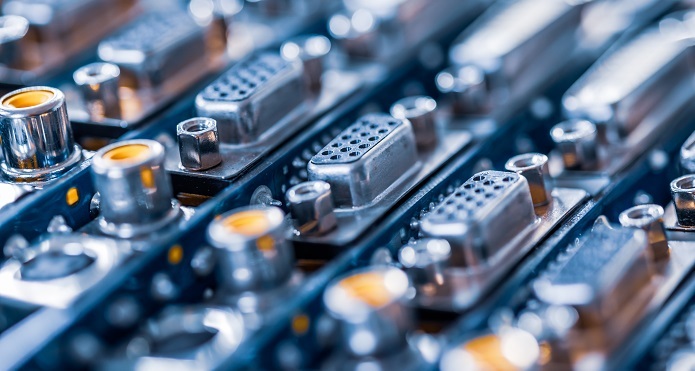
 Data Structure
Data Structure Networking
Networking RDBMS
RDBMS Operating System
Operating System Java
Java MS Excel
MS Excel iOS
iOS HTML
HTML CSS
CSS Android
Android Python
Python C Programming
C Programming C++
C++ C#
C# MongoDB
MongoDB MySQL
MySQL Javascript
Javascript PHP
PHPPhysics
Chemistry
Biology
Mathematics
English
Economics
Psychology
Social Studies
Fashion Studies
Legal Studies
- Selected Reading
- UPSC IAS Exams Notes
- Developer's Best Practices
- Questions and Answers
- Effective Resume Writing
- HR Interview Questions
- Computer Glossary
- Who is Who
What is the full form of EPP?
Introduction
Enhanced Parallel Port (EPP) is a similar port standard that was formulated by the Institute of Electrical and Electronics Engineers (IEEE) in the 1990s.

It was organized as a modification over the original parallel port criterion, which was restricted in tenures of speed and functionality. Enhanced Parallel Port makes use of a 32-bit database. It can transfer data at a speed of 2mb/s. Moreover, it can support a large number of data transfer modes and allows external devices to signal the computer.
Advantages of EPP
EPP quickly became widespread and was widely embraced in many industries and applications that needed high-speed data transfer, such as printing, imaging, and data acquisition. It was also utilized in some industrial control strategies and some scientific and engineering applications. Some of the benefits of the Enhanced Parallel Port (EPP) criterion comprise −
High-speed data transfer − EPP facilitates faster data transfer speeds than the original parallel port criterion, authorizing quicker data communication and faster process.
Bidirectional data transfer − EPP facilitates data to be sent and received simultaneously, which was not feasible with the Maverick parallel port standard. This bidirectional data transfer capacity boosts the efficiency of data transmission and reduces the overall time crucial for data transfer.
Plug-and-play functionality − EPP is a plug-and-play criterion, which implies that appliances using EPP can be readily related to a computer without needing complicated software installations or compositions.
Compatibility with old appliances − EPP is rearward consistent with the Maverick parallel port standard, which indicates that old devices can still be utilized with newer systems that authorize EPP.
Low cost − EPP is a fairly low-cost standard, making it an inexpensive alternative for many applications and enterprises.
EPP vs. Other Parallel Port Methods
There are many parallel port standards like SPP( Standard Parallel Port) , Extended Capability Port or ECP etc. But these ports when compared to Enhanced Parallel ports are capable of providing higher data transfer dates.

Moreover, these EPPs are much more flexible than other parallel ports. Therefore, EPP is a good preference over other parallel ports. The Enhanced Parallel Port (EPP) standard presents several benefits over different parallel port modes, comprising −
Quicker data transfer speeds − EPP delivers higher data transfer speeds than different parallel port modes like the Standard Parallel Port (SPP) and the Enhanced Capability Port (ECP). This brings in the EPP standard for applications that need high-speed data transfer.
Bidirectional data transfer − EPP endorses bidirectional data transfer, which implies that data can be transmitted and received simultaneously. This is not feasible with SPP, which only subsidizes unidirectional data transfer.
Plug-and-play functionality − EPP is a plug-and-play criterion, which implies that appliances using EPP can be readily related to a computer without instructing complicated software facilities or layouts.
Backward compatibility − EPP is backwards consistent with the Maverick parallel port standard, which suggests that old appliances can still be utilized with recent systems that subsidize EPP.
Fixed data flow control − EPP endorses restricted data flow control, which enables to provide data integrity and decreases the risk of mistakes during data transfer
Applications of EPP
Over the years, EPPs or Enhanced Parallel Ports have gained worth-noting interface standards like USB and FireWire which are capable of providing faster data transfer rates along with more and more advanced features. Enhanced Parallel Port (EPP) technology is generally utilized in an assortment of applications that mandate high- speed data transfer and bidirectional data output. Some of the most familiar applications of EPP enclose −
Printers − EPP or Enhanced Parallel Port is frequently utilized in printers and other imaging appliances that mandate fast and reliable data transfer between the computer and the printer.
Scanners − EPP or Enhanced Parallel Port is also utilized in scanners, which need bidirectional data to flow to transmit images from the scanner to the computer and control signals from the computer to the scanner.
Data accession systems − EPP or Enhanced Parallel Port is used in data acquisition systems that need the fast and precise transfer of data from sensors and other input devices to the computer.
Industrial automation − EPP or Enhanced Parallel Port is utilized in industrial automation strategies to control and monitor presentation processes, comprising robotics and machine vision systems.
Gaming devices − EPP ( Enhanced Parallel Port) is utilized in gaming appliances, comprising joysticks and other controllers, to deliver fast and responsive data transfer between the appliance and the computer.
Digital cameras − EPP (Enhanced Parallel Ports) is also utilized in digital cameras to deliver fast and dependable transfer of images and other data from the camera to the computer
Conclusion
Enhanced Parallel Port (EPP) is a technology that efficiently fits out fast and reliable data transfer and bidirectional data flow between a computer and a peripheral appliance. It is extensively used in different applications such as printers, scanners, data acquisition systems, industrial automation, gaming devices, and digital cameras.
Enhanced parallel ports facilitate several benefits over other parallel port modes such as enhanced speed, bidirectional communication, and flexibility. The enhanced parallel port is a favourably valuable and versatile technology that has facilitated the expansion of many resourceful developments and applications.
FAQs
Q1. Write the maximum speed of the parallel port.
The maximum speed of the parallel port is 2.5 mb/s.
Q2. What is the number of data lines in a parallel port?
There are eight lines in a parallel port.
Q3. Which are the devices that can be connected to parallel ports?
The devices that can be connected to parallel ports are printers, monitors and projectors.

